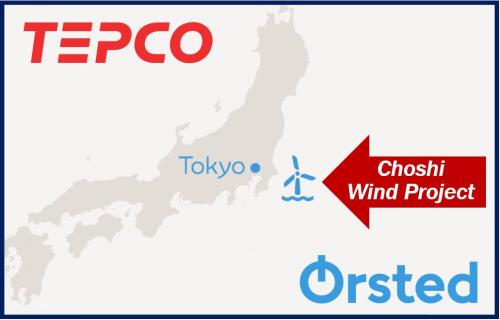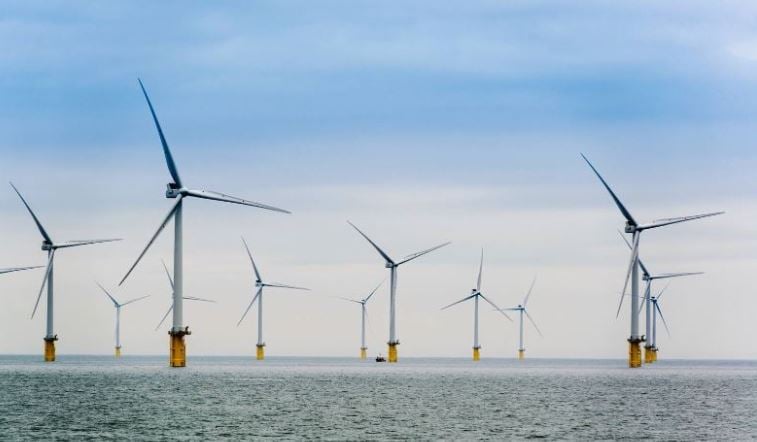
Ørsted A/S and TEPCO (Tokyo Electric Power Company Holdings, Inc.) have signed a memorandum of understanding. The two companies will work jointly on offshore wind energy projects.
TEPCO, based in Chiyoda, Tokyo, is Japan’s largest power company. The company employs over 41,000 workers. Its services include electricity generation, transmission, and distribution.
Ørsted, based in Fredericia, Denmark, is the world’s leading offshore wind developer. The company has more than 6000 employees.
TEPCO has been looking for offshore wind energy opportunities in Japan and abroad. Ørsted built the first offshore wind farm in the world in 1991. It has built over twenty-five offshore wind farms across Europe. It also has several large scale offshore wind development projects in Taiwan, Europe, and the US.
Choshi offshore wind project
The two companies will work together on the Choshi offshore wind project near Japan’s capital, Tokyo.
A seabed survey at the Choshi site is underway to assess its feasibility, says TEPCO.
Regarding the joint project, Tomoaki Kobayakawa, TEPCO’s Representative Executive Officer and President, said:
“We’re confident that the partnership combining TEPCO’s extensive expertise in the Japanese power business and Ørsted’s unparalleled track record in the offshore wind business will lead to success in the Choshi project.”
“We hope that this first step paves the way for expansion beyond the coastlines of Japan for the development, construction, operation, and ownership of offshore wind projects.”
“TEPCO is aiming to make renewable energy a core generating source by developing 6-7 GW of renewable energy projects in Japan and overseas. The partnership with Ørsted will provide us with a very strong platform to scale up our renewable energy business as one of our main pillars of business growth.”
Wind projects in the Asia-Pacific region
Henrik Poulsen, CEO and President of Ørsted, commented:
“Our vision is to create a world that runs entirely on green energy, and we look forward to expanding our presence in the Asia-Pacific region and bringing over two decades of offshore wind knowledge into this partnership for the Choshi project.”
“As the largest player in the Japanese electricity industry, TEPCO has deep insights into the local power market and the regulatory requirements.”
“This MoU is the first step in Ørsted and TEPCO’s aspirations to deliver on Japan’s ambitions for domestic renewable power generation at a large scale and contribute to making Japan a leading offshore wind market in the Asia-Pacific. We welcome this first opportunity to work with TEPCO and look forward to strengthening our relationship further.”
Japan’s offshore wind market
Ever since the Government’s commitment to generate more electricity from renewable sources, Japan’s offshore wind market has been gaining momentum. Recently, the Government passed new legislation for the designation of large-scale offshore wind development zones.
The Japanese government is keen on initiating as many onshore and offshore wind projects as possible. Its 5th Basic Energy Supply Plan (July 2018) has a target of 10 GW wind capacity by 2030. The target is for both onshore and offshore wind energy facilities.
The Government also aims to have 22-24% of its total electricity generation coming from renewable sources by 2030.
According to a Ørsted press release:
“More than 70% of Japan is mountainous, and around three-quarters of its 127 million population live in urban coastal areas, which makes offshore wind an ideal source of large-scale, homegrown renewable electricity generation for Japan.”
What is renewable energy?
Renewable energy is energy whose source lasts forever. In other words, it never runs out – it is everlasting. ‘Everlasting,’ in this context, refers to the time scale of a human rather than a geological time scale.
Wind energy captures the energy in the wind and converts it into electricity. We cannot use up all the wind. We know there will always be wind somewhere.
The Sun’s energy, as far as we are concerned, is also everlasting. Therefore, solar energy is also a type of renewable energy.
Energy from waterfalls, tidal movements, and rivers are always present. Hence, hydropower is a type of renewable energy too.
Other types include geothermal (the Earth’s internal heat) and biomass (fuel from organic materials) energy.

